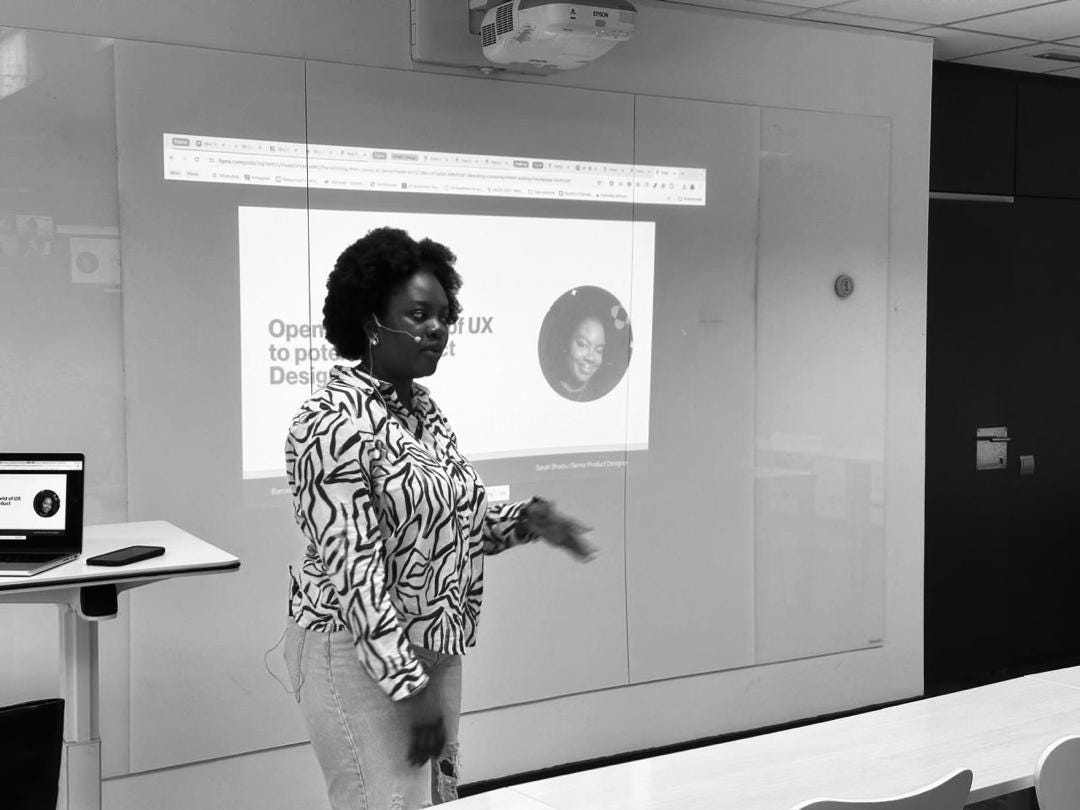Productivity Hacks from Sarah Shaibu - Senior Product Designer
Practical Strategies for Managing Tasks and Maximizing Output
We had a chat with Sarah Shaibu to shed more light on how she has been able to stay productive and deliver excellent work as a Product Designer. Her productivity hacks, though simple, offer insights that can be very helpful for Product Designers trying to find a balance with work and stay productive. Without wasting much time, let's dive straight into the interview and learn a few tips and hacks from Sarah.
Can we meet you?
Hello, my name is Sarah Shaibu. I am a Senior Product Designer, and I currently work for Pearson, an Education Learning Company.
What does a typical workday look like for you?
My typical workday includes having a meeting with my Product Manager and Head of Product Design. I also have conversations with Engineers about features that are ready for development and features that I am thinking about designing to get their thoughts or feasibility on whether they are possible or not. I typically end my day by checking with Nigeria to see if there are any changes in the priorities set by the Product Manager or by creating my research plan for user interviews that I will have during the week.
Do you have a morning routine that sets the tone for a productive day?
Before I start work, I create personal and professional to-do lists. The personal to-do list contains tasks that are not necessarily related to my work, like laundry, making lunch, and ordering groceries. The professional to-do list contains tasks that I want to achieve professionally that day at work. This helps me understand how to use my time before work, during my lunch break, and after work to get everything done in a day, so I always encourage everyone to have a to-do list.
Another thing that sets the tone for me is prayer. I pray and believe in the power of prayer, so I always pray that I have a great day. Additionally, I have a work playlist. I usually sleep with sleep sounds, which have been proven to improve the quality of sleep. I also have a playlist for when I’m working; it energizes me. It’s low-fi, so I’m not listening to any lyrics, but the tone helps me get into the flow of starting to reply to Slack messages, check Figma to get my design done, and during my lunch break, I engage in an activity that helps me relax, like watching anime or reading a couple of chapters from a book.
Which tool/software is indispensable to your workflow?
Productivity apps like Slack and Loom are indispensable. On Loom, I make a lot of recordings about things that are currently going on in Figma or things that I want to explain to people in the office. I also use Notion because it’s the knowledge base I use for both my personal and professional life. Another tool I find very indispensable is Mobbin, which I rely on for benchmarks on things that are happening. Another one is ChatGPT. It helps me with a lot of quantitative data analysis and qualitative data insights by scouring the web for certain things that I feed into it, like industry patterns or the best way to write survey questions or create research studies. I also use Calendar; it helps me manage life and ensures that I’m on top of everything I need to do.
How do you manage your time while working on different projects?
I manage my time using time boxing with a calendar. I believe in the power of time boxing. I not only time box my 9-5 workday in the office but also time box 24 hours. I timebox 7 hours for sleep, dinner, lunch, breakfast, household chores, work on side projects, and calls with family. Depending on the priority of the day, I always try to look at the entire 24-hour and time box for everything I need to do.


Can you share some of your productivity hacks?
Give each day of the week a specific theme. For me, Mondays are Work and Family time, meaning that after I am done with work, I use the time to call my family and friends. Tuesdays are Work and Chores time. Tuesdays are less heavy for me in the office, so I do my office work and then concentrate my time at home on chores like laundry and groceries. Wednesdays could be Work and Self-Development time. I do my office work and use my extra time to do something practical like watching a tutorial or learning a course. Giving each day a specific theme can really improve your productivity.
Do not underestimate burnout. You will be more productive when you have spaces of time to rest and relax. In all your productive work, create specific downtime—time to shut down your laptop and do something fun, time to sleep, time to have lunch and watch a movie. Actually resting improves your productivity when trying to be productive.
Want to know more about Sarah? You can connect with Sarah Shaibu on LinkedIn and on Twitter.
_______
Get Afrocentric stock images here for your next design project.
https://ninthgrid.com/


